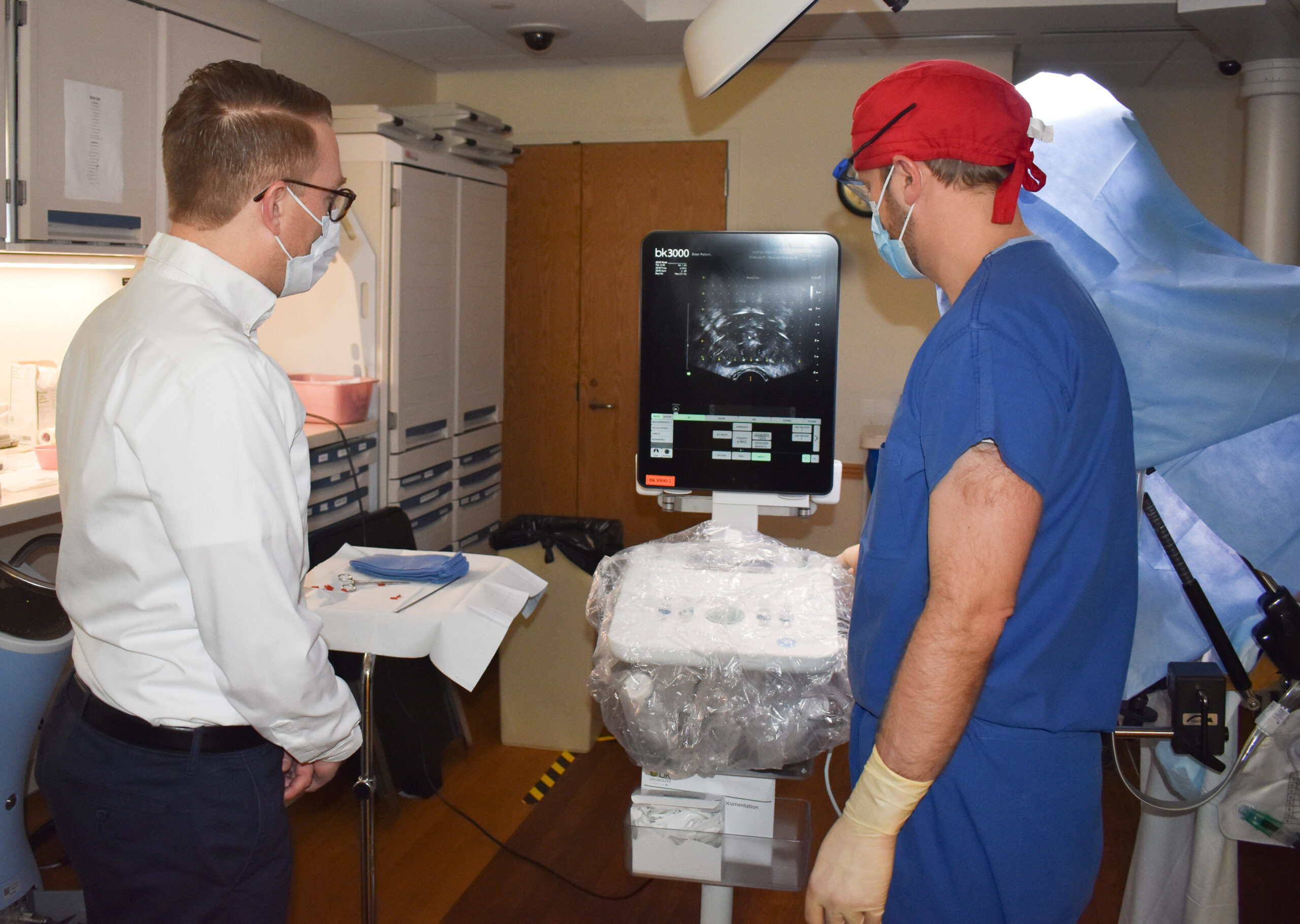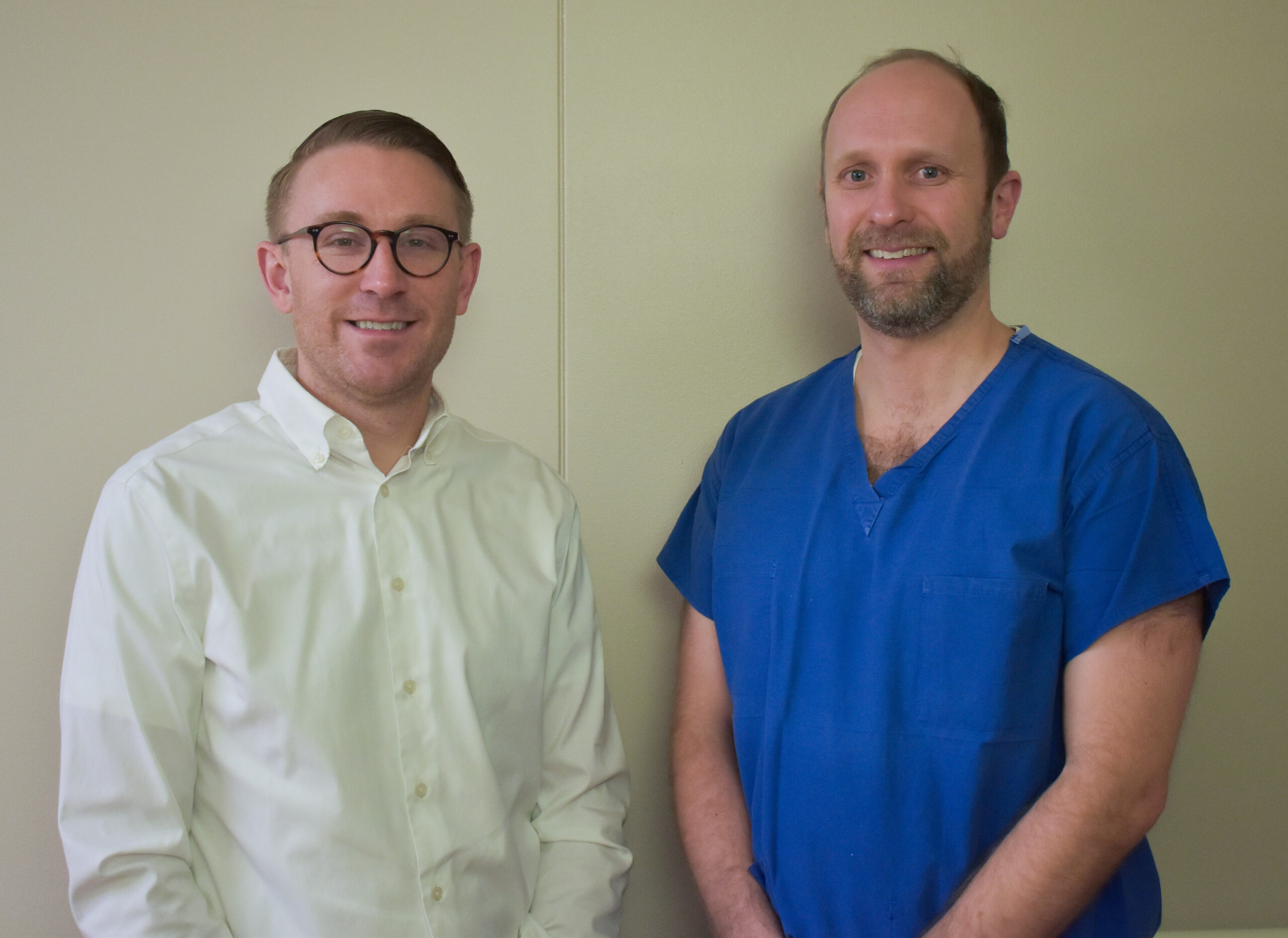
Jordan Slagowski, PhD, DABR, board-certified medical physicist in the Department of Human Oncology, was selected from a competitive pool of applicants for funding this summer when he was awarded a Wisconsin Prostate SPORE Pilot Grant funded by the National Cancer Institute (NCI). The grant will support a year of research focused on running computational simulations in their lab to improve catheter placement during brachytherapy procedures for prostate cancer patients. The proposal was chosen based on its goal of developing an innovative platform that will directly integrate 3D imaging information with live ultrasound and provide physicians with real-time recommendations of where to insert needle catheters during brachytherapy procedures using artificial intelligence. Slagowski believes this fusion of technology promises to redefine the status quo prostate brachytherapy implant procedure and improve patient quality-of-life.
SPORE Grants are awarded to institutions to support basic and clinical/applied scientists and the research they’re doing to further the treatment of human cancers. SPORE Pilot Grants are awarded to junior faculty with a focus on career enhancement. An expert in the field must also be part of the team applying. Jordan Slagowski’s prostate cancer research mentor, DHO faculty member John Floberg, MD, PhD, is working on the project alongside Slagowski and a full-time graduate student.
In preparation for the grant application, Slagowski gathered preliminary data by completing a treatment planning study using clinical software.
“At this early stage of the study, we are focused on algorithmic development to create new technologies and methodologies that we hope to eventually integrate into the clinic to enhance catheter or needle navigation,” said Jordan Slagowski.
The idea for this research evolved over a number of years, but first took root when Slagowski was completing his PhD at UW-Madison in medical physics within the Image Guided Interventions Lab under Michael Speidel, PhD, which focused on applying advanced image reconstruction to help navigate cardiac devices to more accurately ablate arrhythmias. It wasn’t until years later during his radiation oncology physics residency at MD Anderson Cancer Center when he received training in brachytherapy, that Slagowski realized he could use his knowledge from the fields of cardiology and oncology to improve the navigation of catheters and needles.
Brachytherapy is an effective form of radiation therapy where a sealed radiation source is placed near or directly in the tumor. This helps spare nearby healthy tissues and reduces side effects for the patient. However, the current model has two major limitations. First, lesions within the prostate identified from MRI and PET images are not visible on ultrasound which is used to guide implant procedures. Second, catheters are placed based on physician intuition and experience which increases variability and may be suboptimal.
The first objective of this study is to develop a new optimization framework that’s going to integrate both target structure and organ-at-risk with the actual catheter positions. “Currently needle placement is forward directed, not inversely optimized, but we do know the final solution is heavily dependent on where the needles are placed,” said Slagowski. “The second objective of the study is to apply artificial intelligence to automatically delineate the targets and organ-at-risk, which we think will improve procedure efficiency and consistency across different institutions or even users within the same Institution.”

Once the initial year of research is complete, there is an opportunity for Slagowski and Floberg’s team to apply for a competitive renewal grant which would allow them to keep gathering data for another year and further the depth of their research. The long-term goal is real-time implementation and clinical translation to improve procedure outcomes. By exhibiting the feasibility and promise of the technology in the first two years, the team will pursue a larger NIH grant to perform a clinical trial.
According to Zach Morris, chair of the Department of Human Oncology, the project is a perfect example of how the Department of Human Oncology, which is comprised of Radiation Oncologists and Physicists, works every day to advance the field of radiation oncology.
“This project, which combines Dr. Slagowski’s expertise in medical physics with Dr. Floberg’s deep understanding of the challenges that patients face everyday, is an excellent example of translational research and a reflection of our department’s unwavering commitment to collaboration, innovative thinking, and the patients we are privileged to serve,” said Morris.